How to Grow Lettuce in the UK: Complete Guide from Seed to Harvest
Discover how to grow fresh, crisp lettuce in your UK garden all year round. From choosing the right varieties to harvesting techniques, our expert guide covers everything you need for a successful lettuce crop.
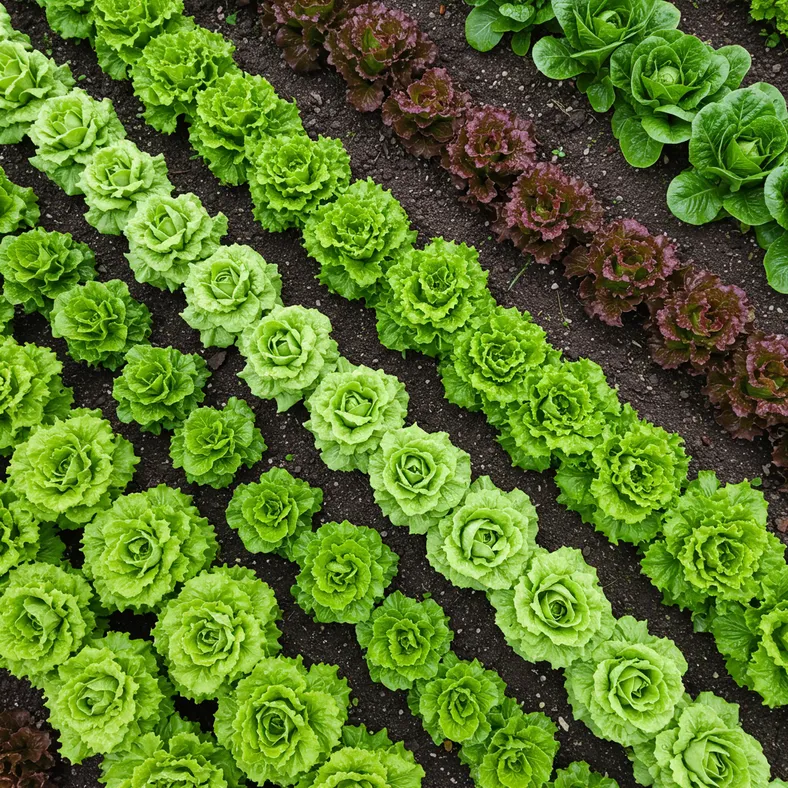
Growing lettuce in the UK is one of the most rewarding gardening experiences for beginners and experts alike. These versatile leafy greens thrive in our climate, offering fresh salads from spring through winter with the right varieties and techniques.
Whether you're working with a small balcony container or a large garden plot, lettuce adapts beautifully to UK growing conditions. From crisp Little Gem to buttery butterhead varieties, you can enjoy homegrown lettuce that's fresher and more flavourful than anything from the supermarket.
Our comprehensive guide will walk you through every step of the lettuce growing process, from selecting the perfect varieties for your space to harvesting your final crop. You'll learn insider tips for extending your growing season and troubleshooting common UK-specific challenges.
Choosing the Right Lettuce Varieties for UK Gardens
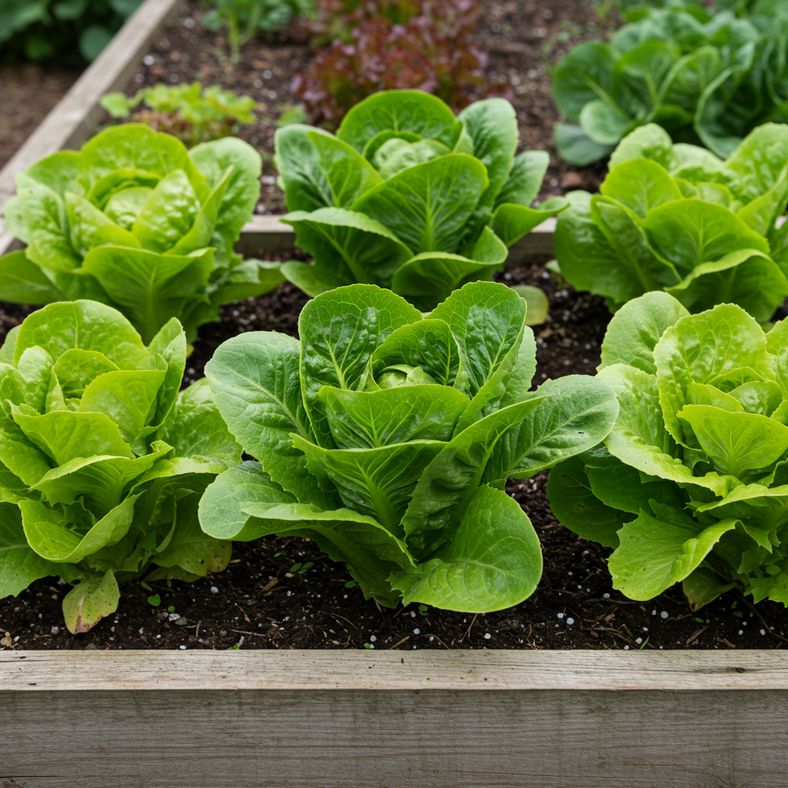
The secret to successful lettuce growing in the UK starts with choosing varieties suited to our climate and your growing space. With hundreds of lettuce varieties available, selecting the right ones can transform your gardening experience from frustrating to fantastic.
Hearting Lettuce Varieties
Hearting lettuces form dense centres and typically take 10-14 weeks to mature. These varieties work best in ground beds but can succeed in large containers (minimum 30cm wide).
- Butterhead Lettuces: Offer soft, juicy leaves with mild flavour. Quick to mature and tolerant of variable UK weather conditions. Perfect for beginners.
- Cos Lettuces (Romaine): Feature upright growth with crisp midribs. Little Gem lettuce seeds are particularly excellent for UK conditions and small spaces.
- Crisphead Lettuces: Produce large, crisp hearts resistant to bolting. Include popular iceberg varieties that store well in the fridge.
Loose-Leaf Varieties
These fast-growing types are perfect for continuous harvesting and small spaces. Ready in just 4-6 weeks, they're ideal for cut-and-come-again harvesting.
Loose-leaf lettuces offer exceptional variety in colours, textures, and flavours. They're particularly valuable for UK gardeners as they're more forgiving of variable weather and can be harvested progressively.
Disclaimer: This article contains Amazon affiliate links. We may earn a small commission from qualifying purchases at no additional cost to you.
Preparing Your Growing Site

Success with lettuce begins with proper site preparation. These leafy greens prefer fertile, moisture-retentive soil with good drainage – a combination that's achievable in most UK gardens with some preparation.
Soil Requirements
Lettuce thrives in soil with a pH between 6.0-7.0, which suits most UK garden conditions. The soil should be rich in organic matter to retain moisture while still draining well.
Clear the area of weeds and remove any large stones. Dig in plenty of garden compost or well-rotted manure to improve soil structure and water retention. If practising no-dig gardening, apply a 5cm layer of compost as mulch.
Site Selection
Choose a sunny location for spring and autumn sowings, but provide light shade during hot summer months. In the UK, this typically means full sun from March to May and September to November, with partial shade during June to August.
Protection from strong winds is important, as lettuce has shallow roots and can be damaged by exposure. Consider natural windbreaks or temporary screening for exposed sites.
Container Preparation
For container growing, choose pots at least 30cm wide and deep. Fill with quality peat-free multipurpose compost, leaving 2cm from the rim for watering. Ensure containers have drainage holes to prevent waterlogging.
Sowing Lettuce Seeds
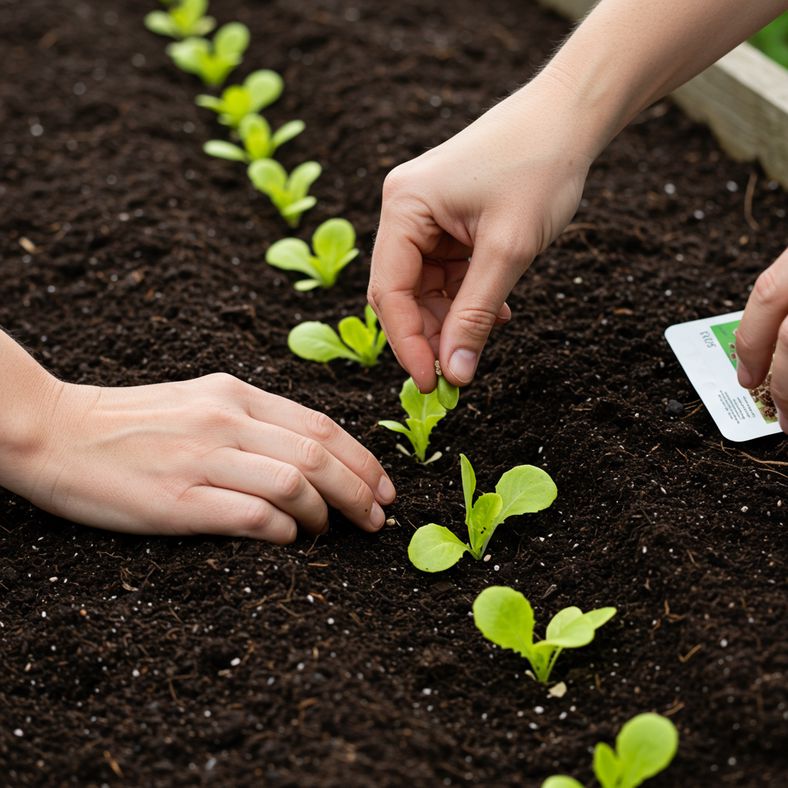
Timing is crucial for successful lettuce growing in the UK. Understanding when and how to sow ensures continuous harvests and avoids common problems like bolting.
When to Sow
The UK's temperate climate allows for extended lettuce growing seasons:
- Spring to Autumn Harvests: Sow outdoors from late March to late July
- Early Crops: Start seeds indoors in February, plant out in March under cloches
- Winter Harvests: Sow hardy varieties in early August, protect from late September
- Year-Round Growing: Use greenhouses or coldframes for continuous production
Indoor Sowing
Starting seeds indoors gives plants a head start and protects them from slugs and unpredictable weather. Sow thinly in seed trays or modular trays using peat-free seed compost.
Keep seeds at 15-20°C for optimal germination. Once seedlings develop their first true leaves, transplant into individual modules. This prevents root disturbance when planting out.
Outdoor Sowing
Sow directly into prepared soil 1cm deep in rows 30cm apart. During hot summer periods, sow in the evening and water with cold water to improve germination rates.
Practice successive sowing every 2-3 weeks to ensure continuous harvests. This prevents gluts and guarantees fresh lettuce throughout the growing season.
Summer Sowing Tips
UK summers can challenge lettuce germination. When temperatures exceed 20°C, provide temporary shade during the hottest part of the day. Water seeds with cold water and consider sowing in the evening when temperatures are cooler.
Planting and Transplanting
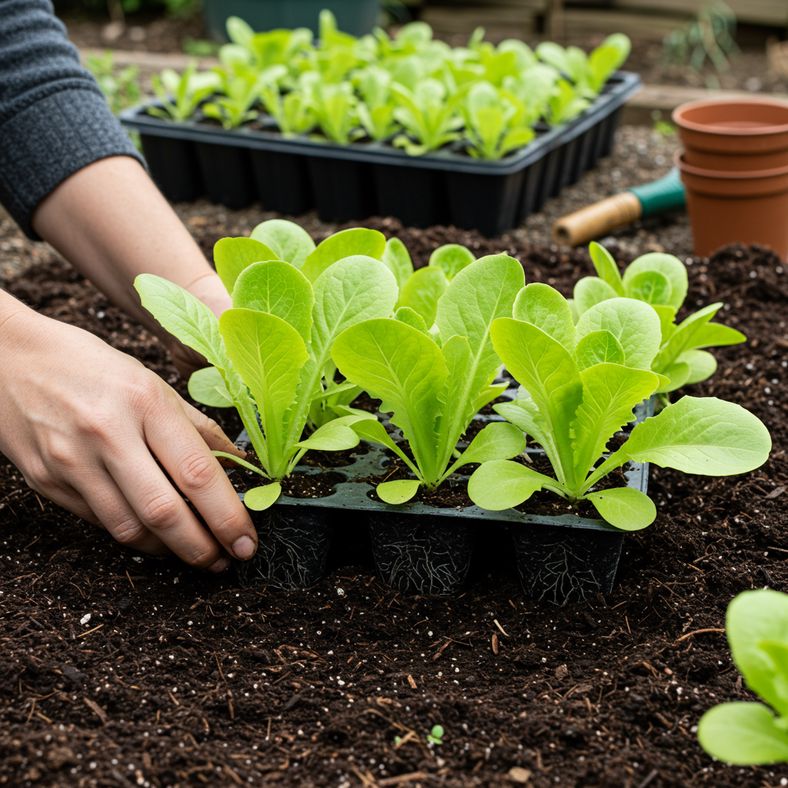
Moving lettuce seedlings to their final growing positions requires careful timing and technique. Proper transplanting ensures strong establishment and reduces stress on young plants.
Hardening Off
Before transplanting outdoor-sown seedlings or indoor-started plants, acclimatise them gradually to outdoor conditions. This process, called hardening off, typically takes 7-10 days in UK conditions.
Start by placing plants outside for 2-3 hours daily, gradually increasing exposure time. Protect from strong winds and extreme temperatures during this period.
Transplanting Technique
Plant lettuce seedlings at the same depth they were growing in their containers. Space hearting varieties 30cm apart and loose-leaf types 15cm apart.
Water transplants immediately after planting and provide temporary shade for the first few days if conditions are warm. This reduces transplant shock and helps establishment.
Thinning Direct-Sown Crops
Thin direct-sown lettuce seedlings when they reach 5cm tall. Remove weaker seedlings, leaving the strongest at appropriate spacings. Thinnings can be added to salads or composted.
Thinning is particularly important for hearting varieties, as overcrowding prevents proper heart formation. Don't delay this process, as competition for resources affects final crop quality.
Seasonal Considerations
Spring plantings benefit from cloche protection until established. Summer plantings require careful watering and possibly temporary shade. Autumn plantings need protection from early frosts.
Essential Care and Maintenance
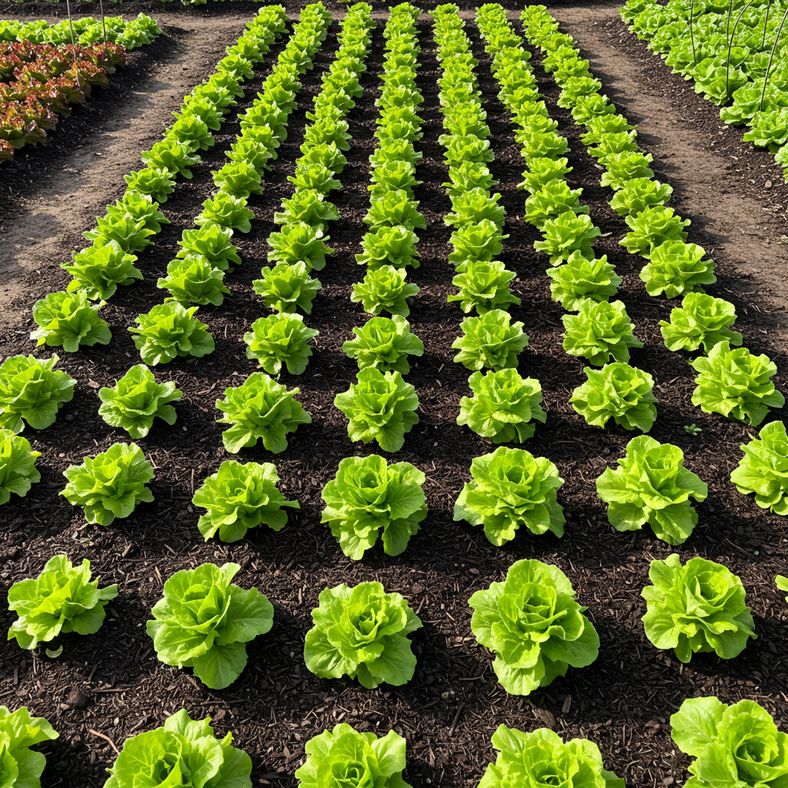
Consistent care keeps lettuce plants healthy and productive throughout the UK growing season. Focus on watering, feeding, and protection from common problems.
Watering Strategy
Maintain consistent soil moisture without waterlogging. Lettuce has shallow roots and quickly suffers from both drought and waterlogged conditions.
Water early morning when possible to reduce disease risk and slug activity. Container-grown lettuce requires daily watering during warm weather, as compost dries out rapidly.
Apply water at soil level rather than overhead watering to reduce disease risk. Use a watering can with a fine rose or drip irrigation for best results.
Feeding Requirements
Lettuce rarely requires additional feeding in well-prepared soil. However, container-grown plants benefit from fortnightly applications of liquid fertiliser during active growth.
For optimal growth, consider using a balanced organic liquid feed. Levington Tomorite works well for container lettuce, providing steady nutrition without encouraging excessive leaf growth.
Mulching Benefits
Apply organic mulch around established plants to retain moisture and suppress weeds. Garden compost, leaf mould, or straw work well in UK conditions.
Mulching also helps regulate soil temperature and reduces the need for frequent watering. Apply mulch 2-3cm thick, keeping it away from plant stems to prevent rot.
Weed Management
Keep young lettuce plants weed-free, as they don't compete well with established weeds. Hand-weed carefully around plants to avoid disturbing shallow roots.
Regular weeding also removes slug and snail hiding places, reducing pest problems. Use quality secateurs for precise weed removal without damaging nearby plants.
Harvesting Your Lettuce Crop
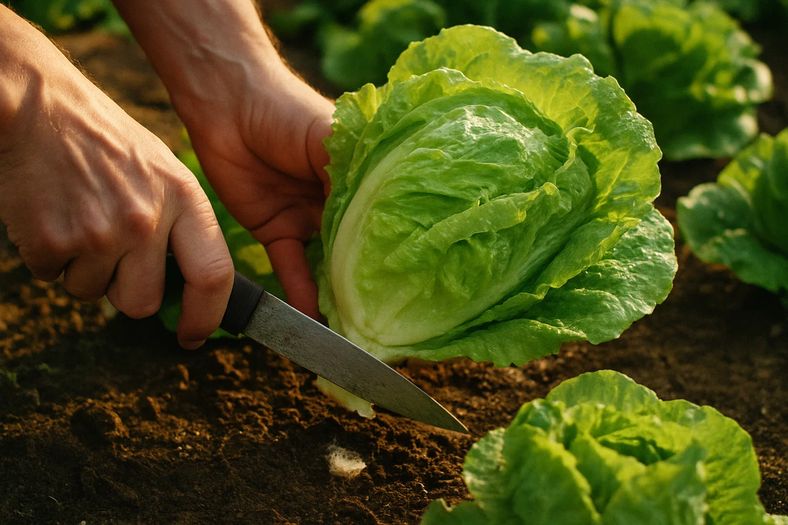
Knowing when and how to harvest lettuce maximises flavour and extends your crop's productive period. UK growing conditions allow for extended harvesting seasons with proper technique.
Timing Your Harvest
Harvest lettuce in the early morning when leaves are crisp and full of moisture. This timing provides the best flavour and longest storage life.
Loose-leaf varieties are ready when leaves reach 10cm long, typically 4-6 weeks after sowing. Hearting varieties need 10-14 weeks to form solid hearts.
Harvesting Techniques
For whole hearting lettuces, cut through the main stem 2.5cm above ground level. This allows the remaining stump to regrow smaller secondary heads.
Harvest loose-leaf varieties using the cut-and-come-again method. Either pick individual outer leaves regularly or cut all growth 2cm above the crown for complete regrowth.
Extending the Harvest
Regular harvesting encourages continued production. Don't allow plants to become over-mature, as this triggers bolting and bitter flavours.
In hot weather, harvest more frequently to prevent bolting. During cooler UK autumn periods, growth slows but quality remains excellent.
Storage and Preservation
Fresh lettuce keeps best when harvested clean and dry. Wash only when ready to use, as excess moisture encourages rot.
Store whole heads in the refrigerator for up to one week. Individual leaves maintain quality for 3-4 days when properly stored.
Troubleshooting Common Problems
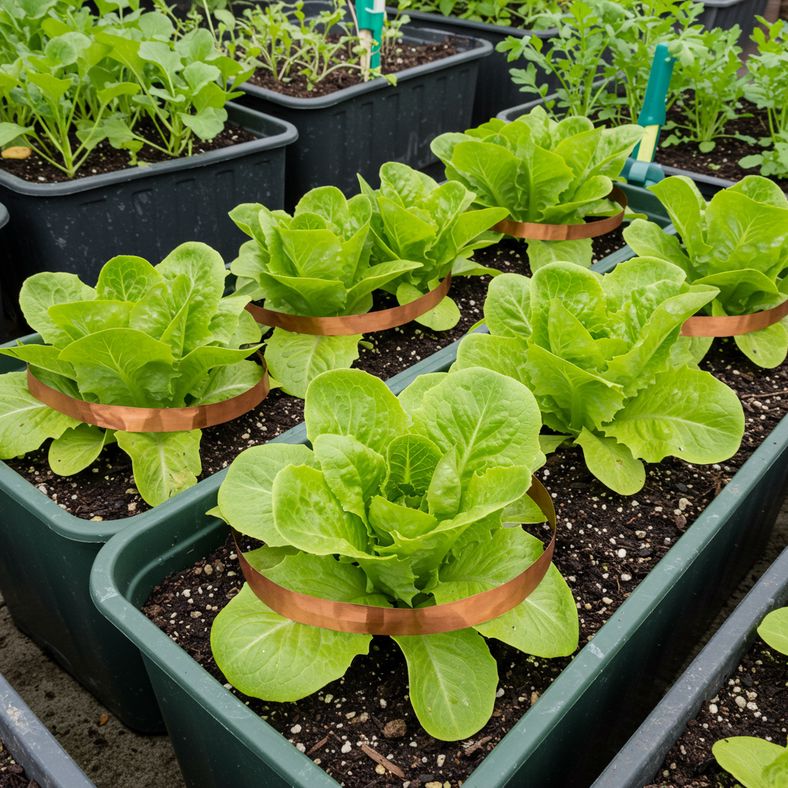
UK lettuce growing comes with specific challenges, but most problems are preventable with proper care and attention. Understanding common issues helps you maintain healthy, productive crops.
Bolting Prevention
Bolting (premature flowering) is the most common UK lettuce problem, especially during hot summer periods. Once lettuce bolts, leaves become bitter and inedible.
Prevent bolting by maintaining consistent soil moisture, providing afternoon shade during hot weather, and choosing bolt-resistant varieties. Harvest promptly when plants reach maturity.
Slug and Snail Management
These pests are particularly problematic in the UK's damp climate. Young lettuce plants are especially vulnerable.
Create barriers using copper tape around containers or apply organic slug pellets. Encourage natural predators by providing habitat for birds, frogs, and beetles.
Aphid Control
Aphids can quickly colonise lettuce leaves, particularly during warm weather. Check plants regularly for early infestations.
Spray affected plants with water to dislodge aphids, or use insecticidal soap. Encourage beneficial insects like ladybirds and lacewings.
Disease Prevention
Grey mould (Botrytis) can affect lettuce in humid UK conditions. Improve air circulation and avoid overhead watering to reduce disease risk.
Remove affected leaves immediately and dispose of them away from the garden. Ensure proper plant spacing to promote good air circulation.
Germination Issues
High temperatures above 25°C can prevent lettuce seed germination. During hot UK summers, sow seeds in the evening and provide temporary shade.
Poor germination can also result from old seed. Purchase fresh seeds annually for best results, as lettuce seeds lose viability quickly.